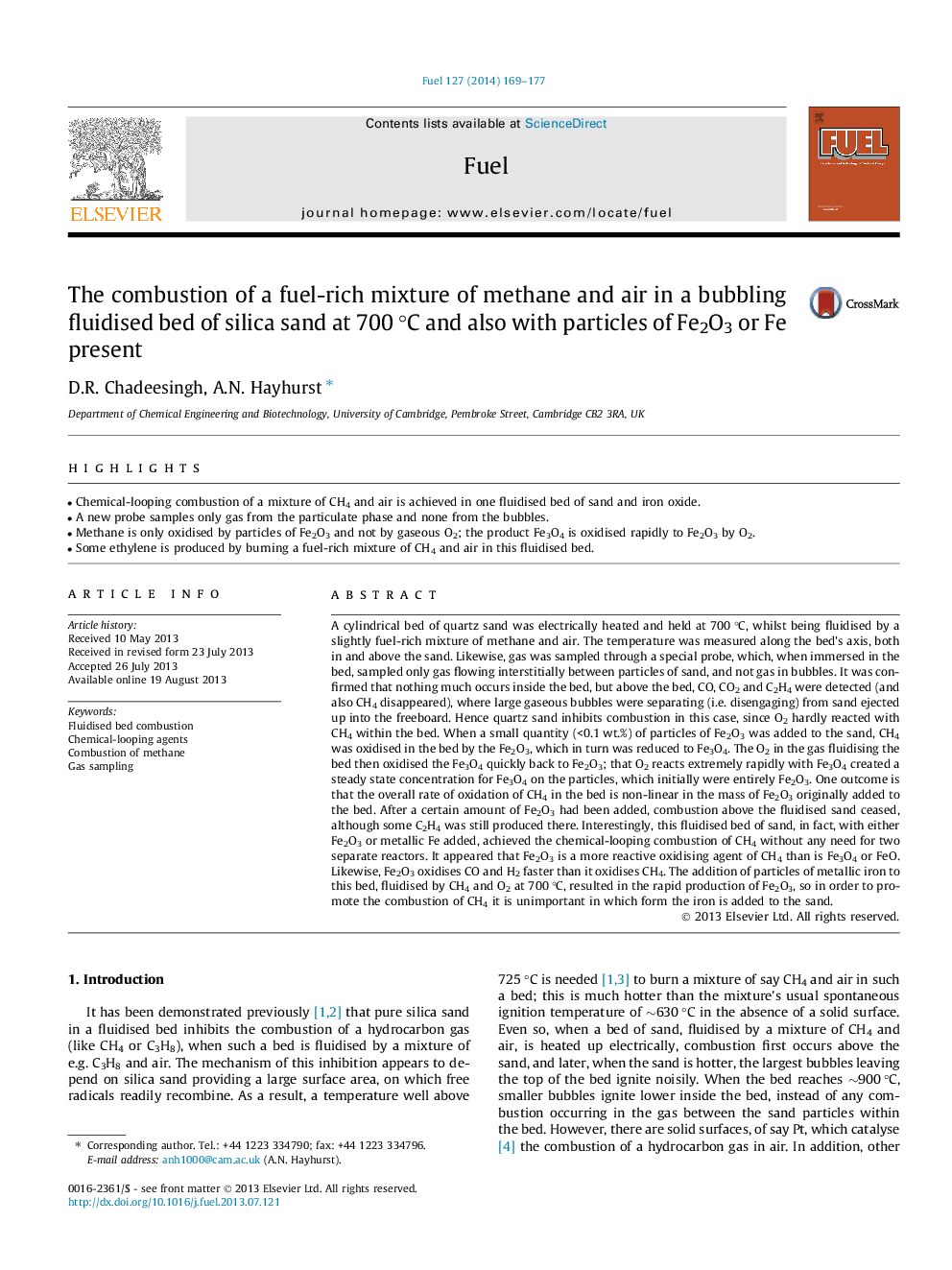| کد مقاله | کد نشریه | سال انتشار | مقاله انگلیسی | نسخه تمام متن |
|---|---|---|---|---|
| 6637740 | 461145 | 2014 | 9 صفحه PDF | دانلود رایگان |
عنوان انگلیسی مقاله ISI
The combustion of a fuel-rich mixture of methane and air in a bubbling fluidised bed of silica sand at 700 °C and also with particles of Fe2O3 or Fe present
دانلود مقاله + سفارش ترجمه
دانلود مقاله ISI انگلیسی
رایگان برای ایرانیان
موضوعات مرتبط
مهندسی و علوم پایه
مهندسی شیمی
مهندسی شیمی (عمومی)
پیش نمایش صفحه اول مقاله

چکیده انگلیسی
A cylindrical bed of quartz sand was electrically heated and held at 700 °C, whilst being fluidised by a slightly fuel-rich mixture of methane and air. The temperature was measured along the bed's axis, both in and above the sand. Likewise, gas was sampled through a special probe, which, when immersed in the bed, sampled only gas flowing interstitially between particles of sand, and not gas in bubbles. It was confirmed that nothing much occurs inside the bed, but above the bed, CO, CO2 and C2H4 were detected (and also CH4 disappeared), where large gaseous bubbles were separating (i.e. disengaging) from sand ejected up into the freeboard. Hence quartz sand inhibits combustion in this case, since O2 hardly reacted with CH4 within the bed. When a small quantity (<0.1 wt.%) of particles of Fe2O3 was added to the sand, CH4 was oxidised in the bed by the Fe2O3, which in turn was reduced to Fe3O4. The O2 in the gas fluidising the bed then oxidised the Fe3O4 quickly back to Fe2O3; that O2 reacts extremely rapidly with Fe3O4 created a steady state concentration for Fe3O4 on the particles, which initially were entirely Fe2O3. One outcome is that the overall rate of oxidation of CH4 in the bed is non-linear in the mass of Fe2O3 originally added to the bed. After a certain amount of Fe2O3 had been added, combustion above the fluidised sand ceased, although some C2H4 was still produced there. Interestingly, this fluidised bed of sand, in fact, with either Fe2O3 or metallic Fe added, achieved the chemical-looping combustion of CH4 without any need for two separate reactors. It appeared that Fe2O3 is a more reactive oxidising agent of CH4 than is Fe3O4 or FeO. Likewise, Fe2O3 oxidises CO and H2 faster than it oxidises CH4. The addition of particles of metallic iron to this bed, fluidised by CH4 and O2 at 700 °C, resulted in the rapid production of Fe2O3, so in order to promote the combustion of CH4 it is unimportant in which form the iron is added to the sand.
ناشر
Database: Elsevier - ScienceDirect (ساینس دایرکت)
Journal: Fuel - Volume 127, 1 July 2014, Pages 169-177
Journal: Fuel - Volume 127, 1 July 2014, Pages 169-177
نویسندگان
D.R. Chadeesingh, A.N. Hayhurst,